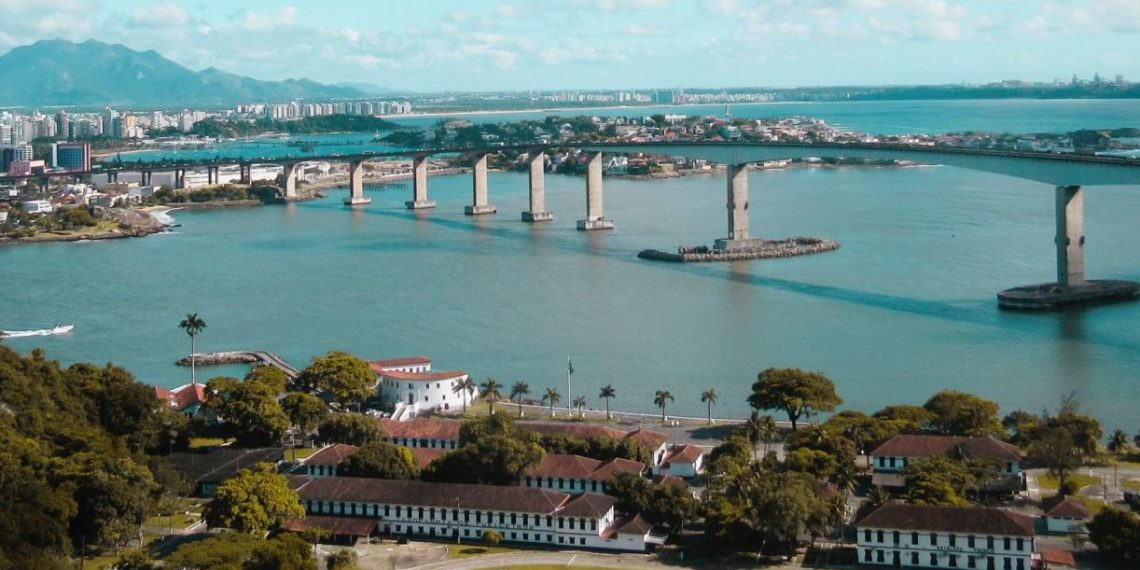Along the coast of Brazil lies the small, mountainous state of Espírito Santo. In the past decade, its four million residents have faced a severe drought: Average rainfall was 65% lower than the historical average, and in 2015, it rained less than half the expected amount. The resulting water crisis forced water rationing and company shutdowns. It also threatened the agricultural industry that many people rely on for their livelihoods.
To reduce the impacts of the drought and increase water security, the state government launched a program to build conventional, or “gray,” infrastructure such as dams and reservoirs. While this type of infrastructure is important, it’s only part of the solution, as current reservoirs need protection to preserve water storage capacity. Espírito Santo also needs to address poor water quality, which can leave pipes susceptible to wear and tear in addition to threatening human health. New water infrastructure investments must protect both water quality and quantity to fully address the state’s water crisis.
A new study from WRI Brasil and partners shows the state may gain more from their investments in reservoirs if they are accompanied by natural, or “green,” infrastructure like native forests that help maintain healthy watersheds. This research found that restoring degraded forests in key watershed areas can generate 50% more economic benefits for the state of Espírito Santo’s water supply company, Cesan, compared to the installation and use of conventional infrastructure alone.
The Benefits of Forest Restoration in Espírito Santo
In a degraded landscape where tree roots aren’t holding soil in place, a large amount of earth and dirt can end up in rivers and reservoirs. This increases dredging costs, leads to greater use of chemical products in water treatment and leaves less space in the reservoirs to store water. Restoring forests around streams, rivers and reservoirs can prevent sediment from reaching waterways, saving the use of chemicals and energy in treatment plants and reducing damage to the reservoir infrastructure.
In Espírito Santo, reforesting 2,500 hectares of degraded pastures in the Jucu and Santa Maria da Vitória river basins — which serve Greater Vitória, the region’s capital and largest city — would reduce sediment. The water company, Cesan, stands to benefit from becoming a restoration partner and investing in natural infrastructure. The sediment reduction would save the company R$93 million ($26 million) over 20 years, which would be a 14% return on the required investment of R$34.1 million ($9.7 million). This investment would pay for itself in 11 years when the trees have grown enough to retain lots of sediment. The state as a whole would also benefit, as these savings would further enable the water company to supply enough clean water for the state.
In addition to the financial benefits for the utility, there are wider societal benefits to reducing pollution and energy use through nature-based solutions (NBS). In the Jucu River alone, restoration would prevent 1,800 tons of sediment — equivalent to the loads of 40 dump trucks — from reaching the water every year. Keeping soil on the land and out of the water means that agricultural lands remain more productive, benefitting farmers. With less sediment to be treated in its water treatment plants, Cesan could avoid using 35,000 tons of chemical water-purifying products. They will also save 19.5 Gwh of electricity over 20 years, the equivalent of the monthly energy consumption of 130,000 households.
Espírito Santo is at the Forefront of Restoration, But More Can Be Done
Espírito Santo is already at the forefront of Brazil’s restoration movement. The state committed to restore 80,000 hectares of forests by 2030 as part of Initiative 20×20, a coalition of 18 countries and regions working to protect and restore 50 million hectares of ecosystems.
The state has already set aside around R$21 million ($4 million) to invest in forest conservation and restoration through a series of programs. The Reflorestar Program, the country’s largest state-level restoration program, directs resources to rural landowners that restore and conserve forests. By investing part of this funding in water-critical areas of the Jucu and Santa Maria da Vitória river basins, state officials can maximize their return on investment and protect their water supply.
Cesan can join these efforts with their own initiatives to ensure that improving water security is at the center of the planning process. Other utilities, such as those in Quito, Ecuador; Camboriu, Brazil; New York City and many more, have taken similar strides by committing a portion of their revenues to fund natural infrastructure and by working with local partners to implement restoration in ways that benefits downstream water quality and flows. Funding contributions from Cesan toward the state’s restoration programs would accelerate progress and improve water security.
Having enough money is not the only key ingredient to a successful restoration program. To deliver the intended benefits of restoration, legal and social conditions must be put in place to sustain these programs over time. Reaching the state’s restoration goal will require additional steps, like mapping opportunities for restoration, shifting policy incentives to reduce barriers to investment and creating a state plan to boost the supply of tree saplings native to the Atlantic Forest biome. Progress will also require more local action. In the north, state-backed water management committees have collaboratively produced action plans with local communities that can attract more investment and benefit more rural families.
Advancing Nature-based Solutions For Clean Water
The success of nature-based solutions isn’t exclusive to Espírito Santo. Similar studies in the states of São Paulo and Rio de Janeiro also show how water companies can benefit from this approach. These cities show how healthy reservoirs and efficient water treatment plants ensure the quantity and quality of water for people in Brazil and around the world. Investing in low-carbon, nature-based solutions like forest restoration can help combat climate change, protect watersheds and biodiversity, and improve human well-being.
WRI Brasil, through Urban Bioconnection Alliance, Cities4Forests and Initiative 20×20, has been working to show that green solutions are fundamental for a resilient and sustainable economic recovery. The state of Espírito Santo and the municipalities in the Greater Vitória Metropolitan Region show what there is to gain in a restoration journey that prioritizes nature-based solutions.



